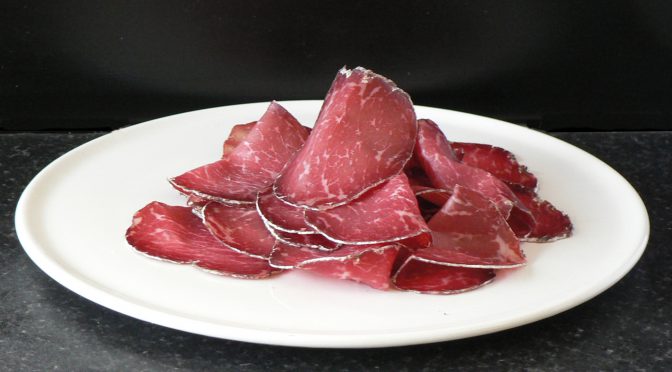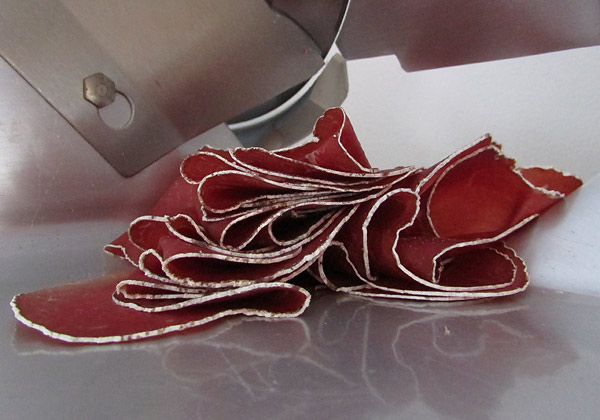
For those that don’t know, Bresaola is an air-dried beef that originates in the north of Italy. In the past, I’ve always made it using Jason Molinari’s recipe from curedmeats.blogspot.co.uk. The recipe below, whilst very different from Jason’s, owes its heritage to his. I’ve removed the cinnamon and clove, reduced the other spices and added a small amount of garlic.
The best of the Italian versions, Bresaola della Valtellina, uses meat from the leg: the cuts we know as topside, silverside and top rump (thick flank). In the US ‘Eye of round’ would be a good choice. It’s best with a piece of meat from one muscle to avoid connective tissue – I used Silverside for mine.
Weigh the meat and use the following percentages of the meat’s weight for the other ingredients:
Salt 2.8%
Sugar 0.5%
Cure #2 – 0.24%
Black Pepper 0.4%
Dried Garlic 0.2%
Dried Thyme 0.05%
Crushed Juniper Berries 0.05%
Dried Rosemary (I used home-dried) 0.025%
If you want to use cure #1 and saltpetre instead of cure #2, use the same amount of cure #1 as you would have used cure #2 and add 0.017% saltpetre
To make the bresaola, start by trimming the meat of all fat and ‘silverskin’, the white and silvery coloured connective tissue found on some meat.
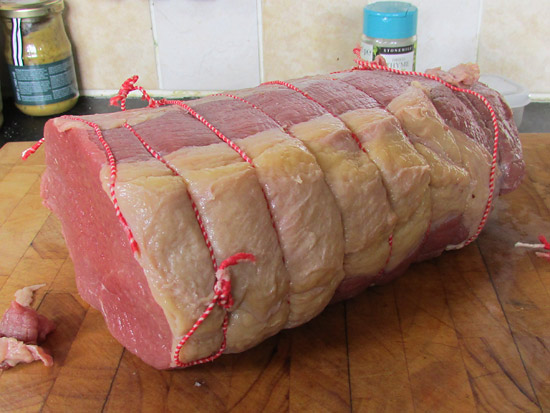
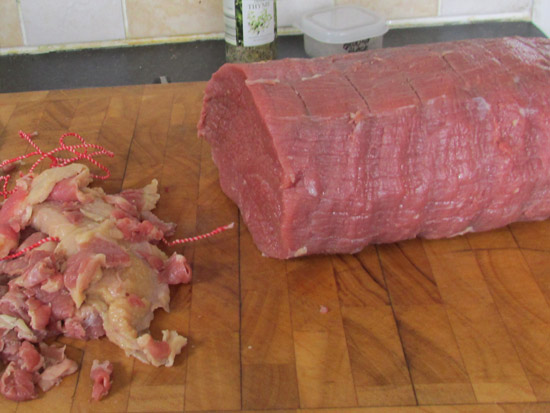
When it has been trimmed, weigh it, make a note of the weight and use the calculator (below) to work out the weights of the other ingredients. Then measure them out and mix them together thoroughly.
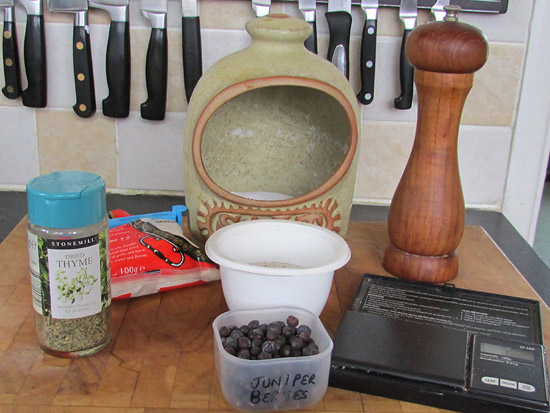
Rub the ingredients into the meat well, then either put it into ‘cling film’ and wrap it up well, or put it into a food-grade plastic bag and wrap it tightly, or seal it in a vac-bag, removing the air so that the bag’s in full contact with the meat, but not under vacuum. Put it into the fridge for 30 days, rubbing it occasionally through the bag.
Image from a previous project
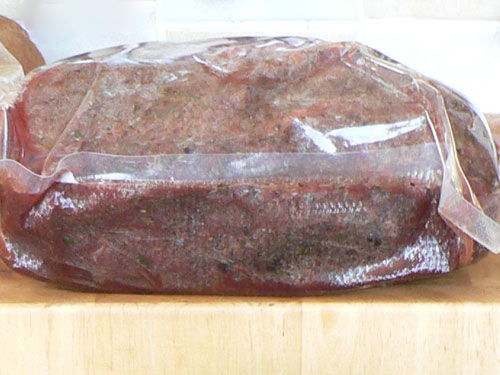
After 30 days, rinse the meat in cold water, then dry it with a paper towel, weigh it and make a note of the weight. Then put it into the fridge for a day for the surface to dry.
At the same time as you do this, if you’re in the UK or other place where commercial mould culture is not readily available, you may want to make your own culture for the mould on the outside of the meat. Either, scrape some white mould from a commercial salami or from one of your own, and add a pinch of sugar and a couple of tablespoons of bottled water or any other drinkable water without chlorine or preservatives. Cover it, and leave it at room temperature.
The bresaola will be dried in a casing. I used a Collagen one, but you may prefer to use an ox bung or beef cap casing as collagens are quite difficult to get in small quantities. If so, you could put a piece of it that’s enough to cover the bresaola in to soak in cold water at this stage.
The following day, if you are using a collagen casing, prepare it according to the supplier’s instructions – in this case, 1 hour in a 10% brine. Then dry any surplus water off the casing using a paper towel and put the meat into the casing and tie it with string tightly.
Images from a previous project
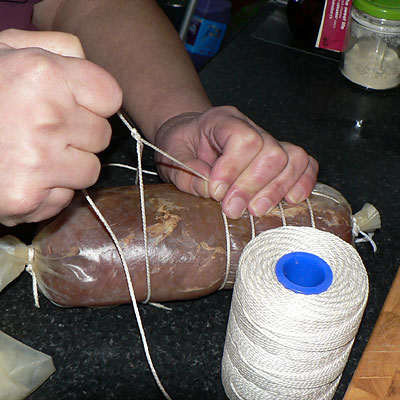
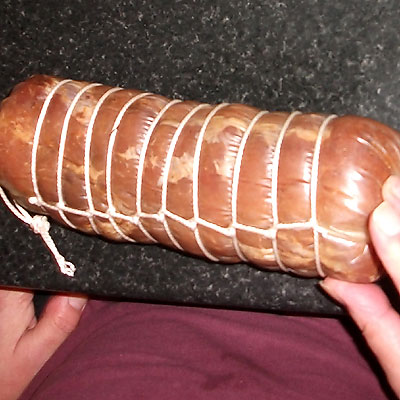
If there are any air bubbles, prick them with a needle that’s been sterilised by holding it briefly in a flame. Weigh the meat and make a note of the weight. Then brush/rub it all over with the ‘mould liquid’ that we made earlier, or with a commercial mould culture, such as Mold 600 (US website) prepared according to the manufacturer’s instructions. Hang the bresaola in your drying fridge or another place where a temperature between 10°C (50°f) and 15.6°C (approx 60°f) and a relative humidity (RH) between 75% and 85% can be maintained. I put mine in a fridge that has been converted to maintain the temperature and humidity that I want. I find that I have less problems when I run it around 12°C with a RH around 75% – 80%. In the early stages, the RH may be in the 90’s; this is perfectly normal when using a small curing chamber and somewhat desirable; we want the RH in the curing chamber to lower gradually as the meat dries.
The meat will develop a coat of dry white mould, don’t be alarmed if initially a slightly fuzzy mould forms as this often precedes the dry one we want. However, fuzzy mould that lingers, or any mould that isn’t white isn’t wanted – but you shouldn’t have that problem if you’ve used the mould culture above. Here’s the bresaola 3½ weeks into drying, it’s covered with a good white mould that’s keeping all the nasty ones at bay. It’s lost about 28% of its post-cure weight:
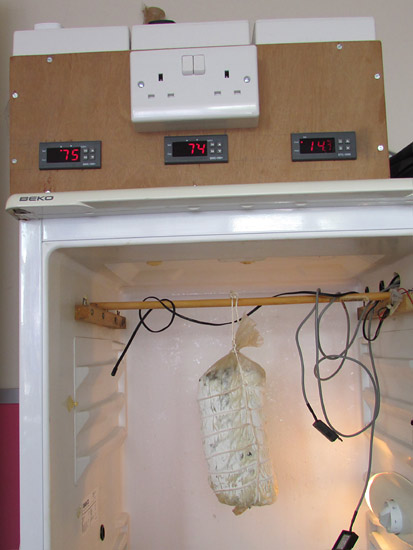
I continued to dry it for 48 days until it had lost just over 40% of its post-cure weight. It doesn’t look much after de-casing:
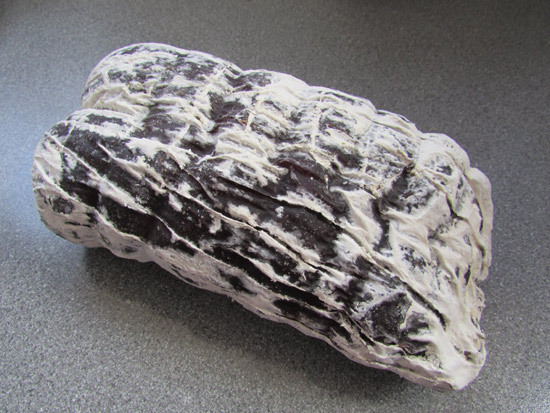
But sliced is another matter altogether:
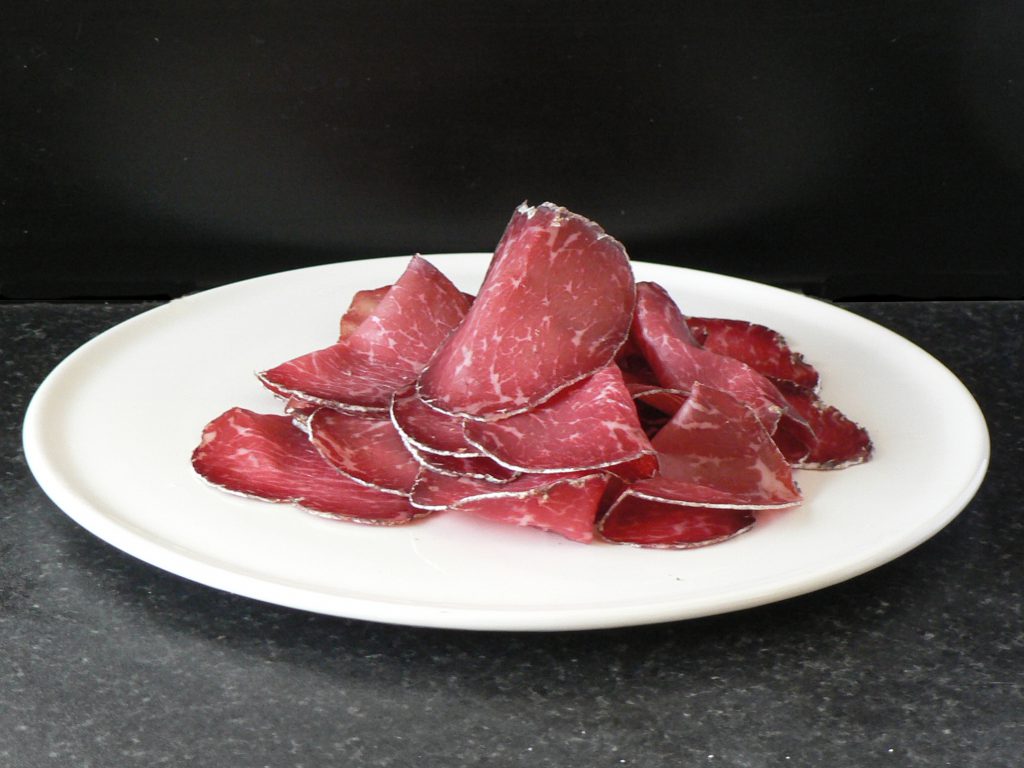
There is a calculator for this bresaola:
Bresaola Calculator
